Torch 2014 – Jesse Richman – Kevin Langeree and ITW with Damien Girardin // Strapless Kitesurfing
Quick interview about the Torch with Damien Girardin, Kite Designer,
What inspired the development of the Torch?
Development started in June of 2004 when I just started working at Naish. At this time, 4 line kites had barely any depower and there were no bridled kites. 5 line kites also didn’t exist yet, so these kites were unsafe and really hard to relaunch (you had to swim as fast you could toward the kite in order to relaunch). It was also a time where kite loops were just beginning and most kites were way too slow to loop safely. So the idea behind the Torch was to make a 4 line kite with depower that turned fast and had the relaunch ability of a 5 line set up!
So this year’s Torch is the 9th edition. What has changed over the years?
The Torch is currently the longest running kite on the market and I believe it’s because we have been able to evolve it accordingly, making it a better kite each and every year. During the first few seasons, the primary focus was on accomplishing better depower while maintaining its superior unhooked performance. As the years went by, we became more and more precise, working on each size individually based on our team rider’s feedback. By then, the performance freestyle characteristics were unanimously recognized on the market. So we focused on making some specific sizes more stable, while increasing the turning speed, depower, or pop of others. Over time, the Torch has become increasingly easier to handle with more depower. We’ve found that a majority of the pros are looking for an easy kite to ride in order to focus on their tricks and riding rather than on trying to fly the kite.
How does the Torch depower if it doesn’t have any bridles?
Because the Torch is C shaped and doesn’t have bridles, the angle of attack adjustment is limited to only a few degrees by nature (having bridles allows for a massive angle of attack adjustment, providing “instant depower”). The Torch actually has a lot of depower, but the depower is obtained in a different way than bridled kites. To depower, the Torch does come to a low angle of attack, but instead of doing it instantly at the position it is in the wind window, it just flies to that position (the Torch comes to the edge of the window). To achieve this, we reduced the leading edge diameter and developed a specific foil profile that resulted in minimizing the overall drag of the kite, letting it fly fast and forward.
By doing that, we actually improved the depower and the overall performance of the kite. The Torch has the ability to fly forward very quickly, so when you edge your board suddenly to send a trick, the kite accelerates instead of stalling like a lot of kites do, which provides amazing pop.
What kind of kiteboarders should get on the Torch? How does it compare to other kites in the Naish line?
The Torch is aimed at kiteboarders who are willing to go freestyling, however, it is also a great freeriding kite that has the advantage of relaunching in very marginal wind thanks to the fifth line.
Compared to all other Naish kites, the Torch has the most precise and direct bar feel; it also has the most pop and the best unhooked performance. When it comes to mega loops, there is no kite that comes close to it. Like Jesse Richman says, “The rider is the only limit on the Torch”.
See the Torch in action in a Petoleprod video :





This is not a Strapless kiteriding, no Fun!